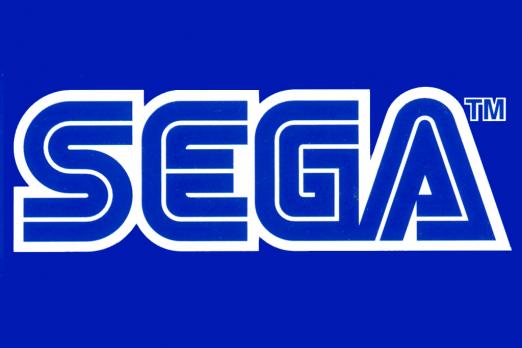
Mega Visions picks for best SEGA games of the decade
From the explosion of the Yakuza series to the release of the greatest mini console on the market, the last 10 years has brought a resurgence of interest in the SEGA franchise.
As we get ready to close out another year at Mega Visions and ring in 2020, we want to take one last look at what SEGA has delivered in the last decade. Each of the staff members collected five of their favorite SEGA games from 2010 to 2019, and give their final farewells to a decade well played.

LBD Nytetrayn
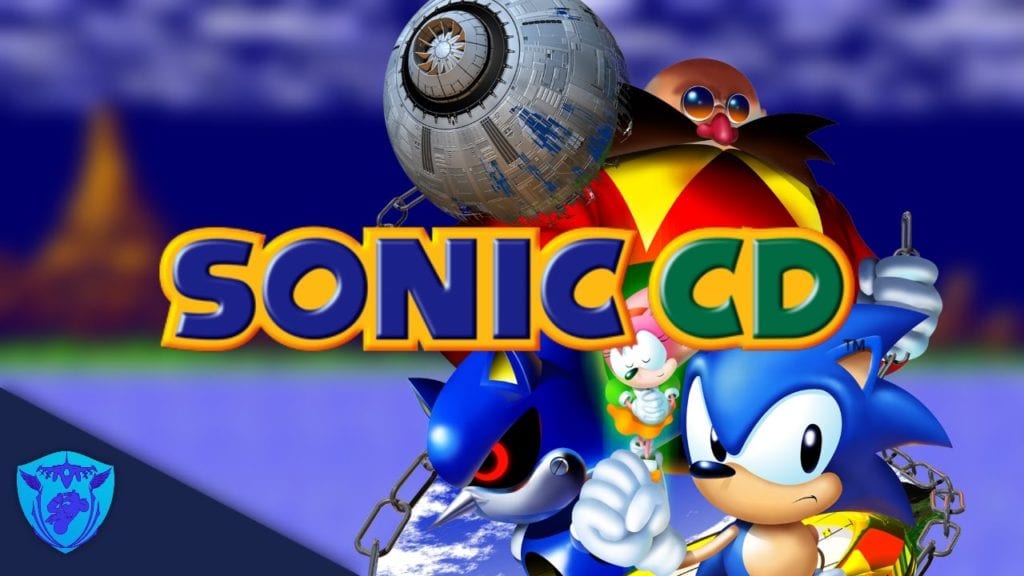
5. Sonic CD
This is a stellar example of how an update should be done, and it’s with one of my favorite Sonic games, no less. While one can argue about things like level design, the otherworldly visuals, both fantastic soundtracks, and the ability to play as Tails keep me coming back time and again. Plus, it helped pave the way for Sonic Mania!
The main reason Taxman and Stealth’s versions of Sonic 1 or 2 aren’t here instead is simply because they’re iOS only. While they play pretty well for touchscreen controls, I’m still not giving them the satisfaction of being on a list like this until I get the satisfaction of playing them on a console.
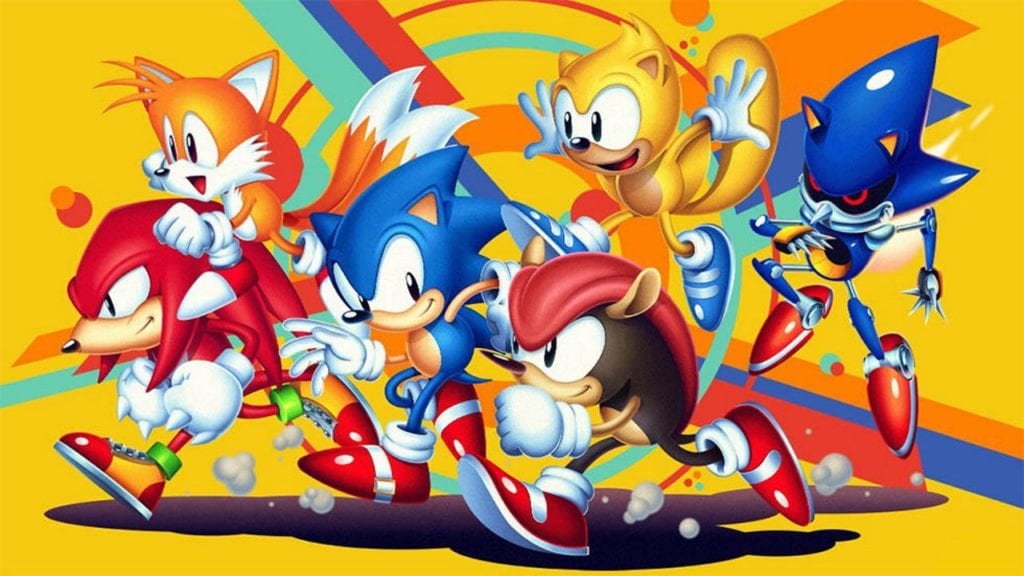
4. Sonic Mania Plus
What’s even better than a love letter to classic 2D Sonic that replicates the feel of the physics, updates the visuals, provides brilliant remixes to classic levels, adds all-new levels interspersed in-between and a terrific soundtrack by Tee Lopes?
Bringing back Mighty the Armadillo and Ray the Flying Squirrel, each with their own techniques, new modes (including palette swaps of every stage), and tweaks to help improve the experience of the original game, of course!
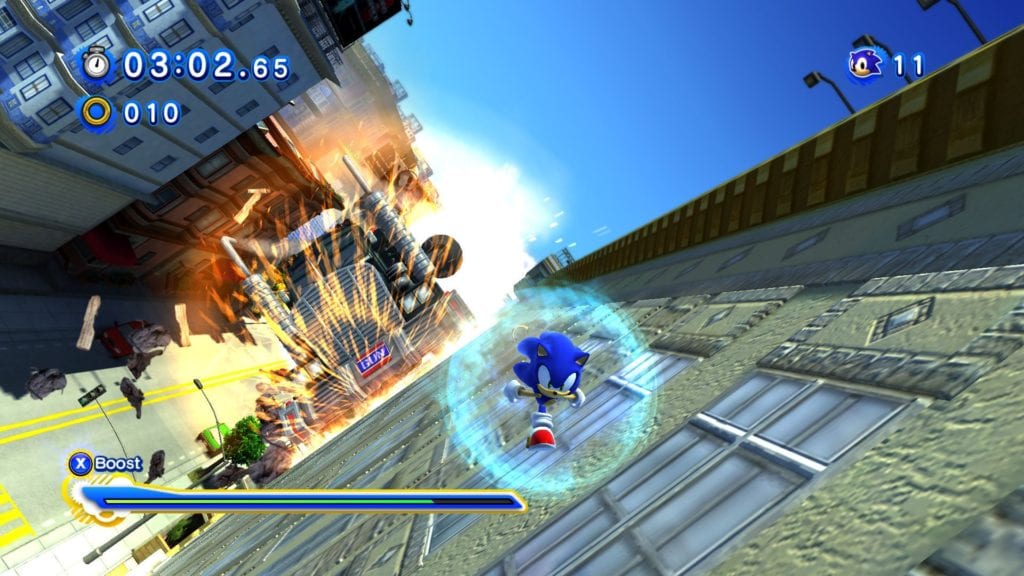
3. Sonic Generations
While its affect on the canon of Sonic is confusing, to say the least, Sonic Generations was (and still is) a nostalgic blast to play. Seeing the return of Zones such as Green Hill and Chemical Plant is starting to wear a little thin now, but at the time, seeing them reimagined with high-definition 3D visuals and remixed music was a pure joy.
While Modern Sonic gets the lion’s share of the spotlight here, with most levels pulled from his 3D era of gaming, it’s Classic Sonic who arguably wins out in the end, with retro-styled 2D gameplay and music for each of those levels. How can you not love City Escape with a skateboard power-up?
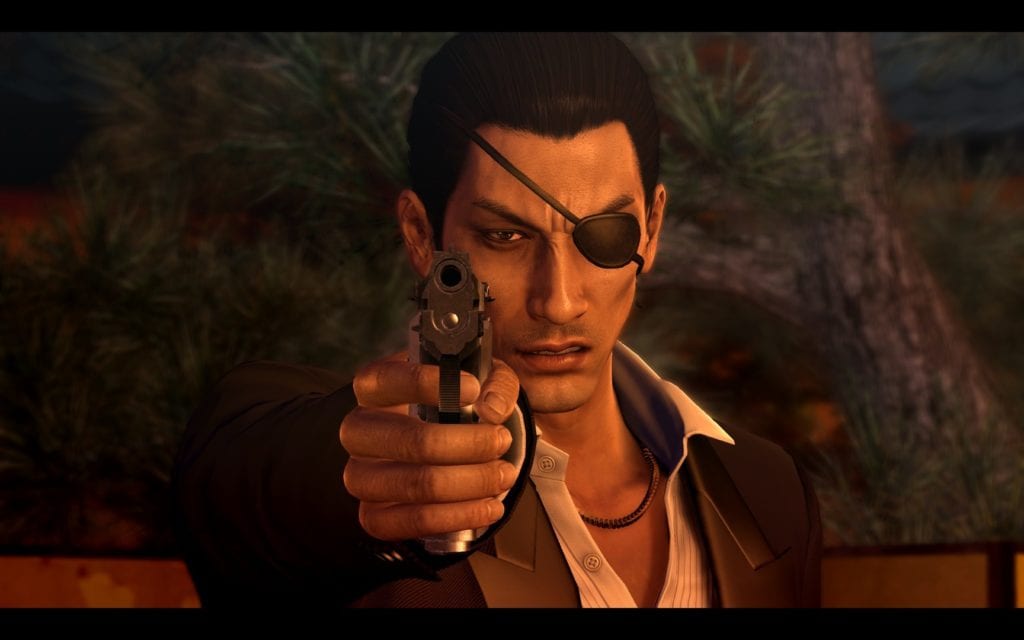
2. Yakuza 0
For years, I fell for the rhetoric that Yakuza was basically “GTA Japan,” but I soon learned that the two series are worlds apart. When Project X Zone 2 introduced me to the duo of Kazuma Kiryu and Goro Majima, I had to learn more about them, and Yakuza 0 arrived at the perfect time to introduce me to the series proper.
And what an introduction! While further releases may iterate and improve upon what’s here in different ways, such as the newer Dragon Engine, I still look back at my first Yakuza as my favorite. There’s just something about that ’80s flair and money flying everywhere that keeps this one as my favorite Yakuza games.
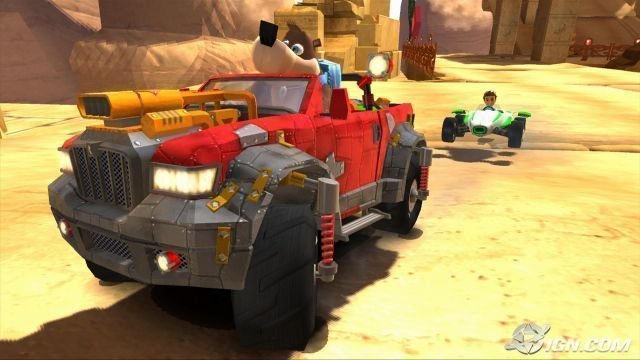
1. Sonic & Sega All-Stars Racing with Banjo-Kazooie
Sonic & All-Stars Racing Transformed adds some fan favorite characters and settings alongside an innovative mechanic which sees your vehicle acclimate itself for land, sea, and air racing, while Team Sonic Racing features a story mode, Sonic characters I’ve long wanted to race as (hi, Blaze), and its own engaging new team racing mechanics. But Sonic & SEGA All-Stars Racing is something of a sentimental favorite, kicking off the decade by giving me something to latch onto at one of my lowest points in life.
Even though its successors do more, I still love this original entry in the series. Sometimes, all you want to do is just drive, you know?
I also feel it was a better racing game all around than the Mario Karts of its day, and that the rival series never really managed to match it until Mario Kart 8. From how it played to the way you unlock new content, everything about this one just felt good. While it’s still available on Steam, I wish the other versions — Xbox 360 in particular — were available to play on newer hardware.
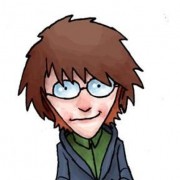
ScottyMo
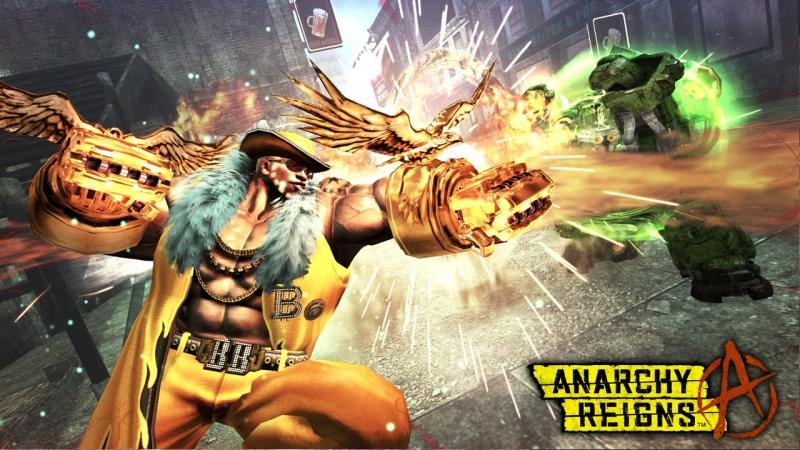
5. Anarchy Reigns
I am a huge fan of the car combat genre, which has all but disappeared until Anarchy Reigns landed out of nowhere. If you could recreate car combat, but remove the cars and include fighter combos then you have Anarchy Reigns. The frenetic multiplayer with a group of friends is such a chaotic good time. The single-player mode is a fun take on a post-apocalyptic world, a setting that so many games have only taken seriously with mountains of grit.
The variety of fighters, with each of their characteristics and style, really brings the cast to life. My only fear is when the servers drop that it does not have any offline multiplayer, but I will find some way to host LAN parties, because it’s a party that needs to live forever.
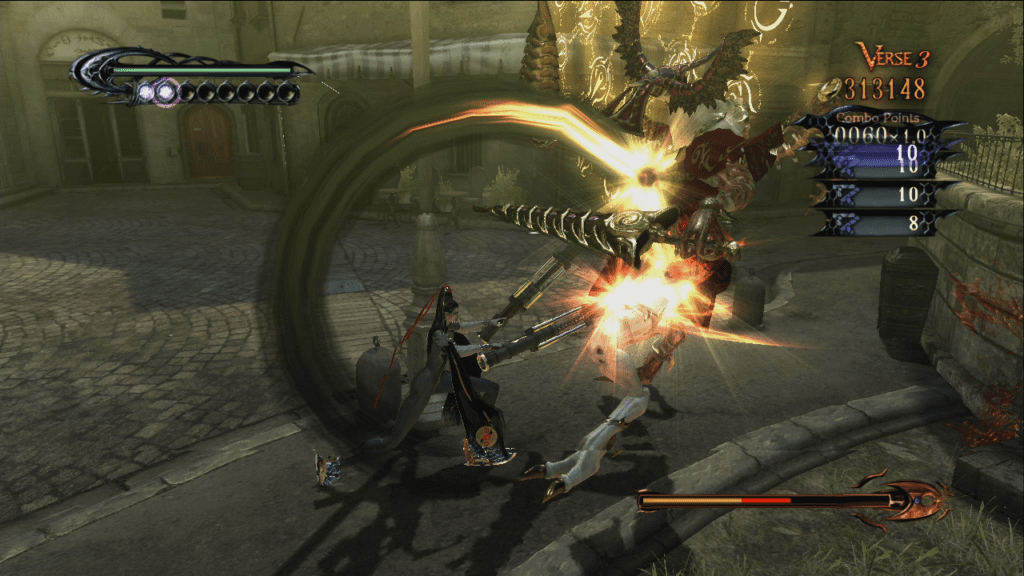
4. Bayonetta
Action games are almost the only thing that hold my attention anymore since I can’t really commit hours and hours to certain adventures unfortunately. I missed out on the Devil May Cry series, so I had no idea what I was getting into with Bayonetta other than insane combos, and I was happily hooked the second I triple kicked some angles back into the afterlife. Bayonetta has plenty of replay value, and some arcade aspects with high scores and upgrades that can create a completely different feel with each run.
The weapons and upgrades of Bayonetta add the depth that intense players are looking for. For casual players like myself, I can go back to any chapter and lay some punches of satisfaction. The game itself is longer than I anticipated, and at some points felt like it overstayed its welcome. However, I can throw all of that aside for the boss battles, which are still some of the biggest and most obnoxious moments I have enjoyed in video games. There are few things more satisfying than building up a meter to have a Hell hound appear out of nowhere to bite a boss’s head off. Who doesn’t enjoy that?
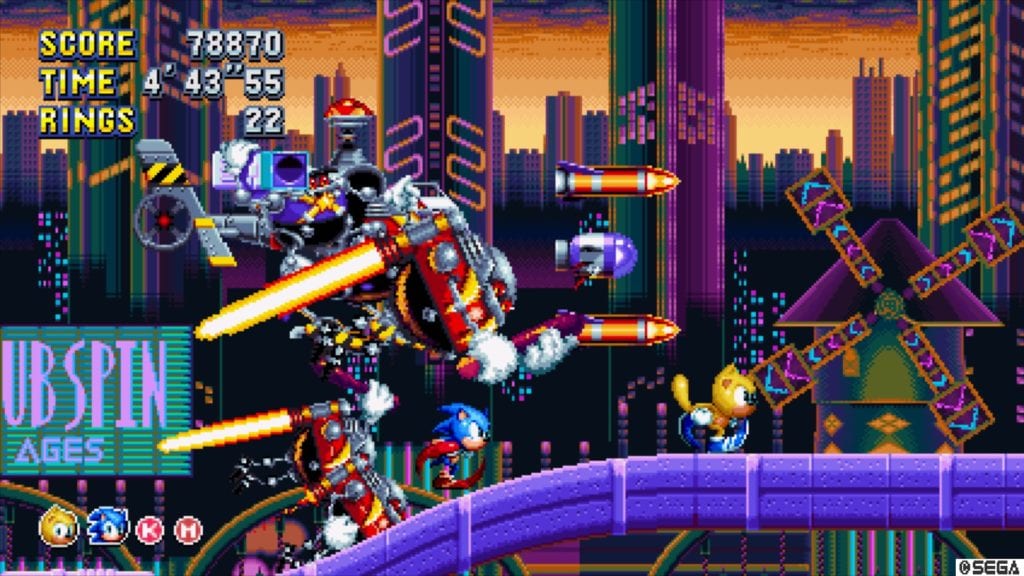
3. Sonic Mania Plus
I have been a victim of the Sonic cycle one too many times, and Sonic 4 was one of the better examples of it. Many 3D Sonic games lend to the reason that I am as cynical of a gamer as I am today. So when someone said there was a new 2D Sonic game releasing, the bar was set rather low thanks to Sonic 4 Episodes 1 and 2. But then I saw the animated intro, and learned a fan was making it, and I was immediately on board. Sonic cycle be damned, I wanted a solid 2D Sonic game. When I saw that Sonic 4 was basically ignored, I knew the series was taking a smart turn.
My only solid complaint of Sonic Mania is the lack of new zones, because those new zones were so strong. I feel they did fewer new than old zones for a safety measure, but the old zones even had varying paths, or almost remixed, just like the soundtrack. The soundtrack itself tied this great entry together. Between old zones and new, this game feels like a true sequel to the strongest era of Sonic games. A nice icing on the cake was the nod to Sonic CD bonus levels, and the sphere-collecting bonus levels as well. People complained about the lack of Sonic 2 halfpipe bonus stages, but I have a feeling those will make an appearance in whatever sequel may be in store.
Sonic Mania was so strong, and then they released the Plus version introducing a new era to Mighty the Armadillo and Ray the Squirrel. Rather than these characters feeling like reskinned Sonic characters, Mighty and Ray actually change the style of gameplay. Mighty’s gameplay was targeted at novice, or leisure playthroughs, with Ray’s flying/gliding ability leading to some amazing moments of threading the needle. With new characters, a great soundtrack, and solid controls, Sonic Mania reminded everyone what they loved about Sonic games.
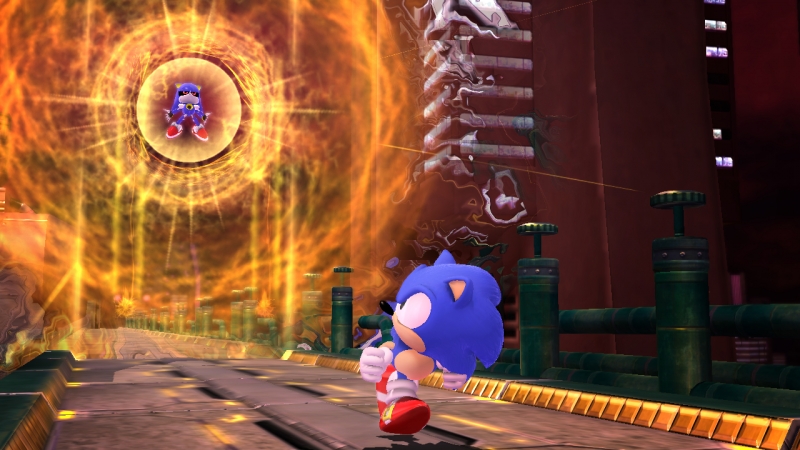
2. Sonic Generations
Sonic Generations is an idea that was long overdue. Play 2D versions of 3D Sonic levels and vice versa. I trust anyone reading this list does not need more of a summary than that of this game. Sonic Generations was something I didn’t know I needed, but want so much more of. Previous 3D iterations of Green Hill Zone do not hold a candle to finally blazing through it as Modern Sonic. I will admit at first I thought they could have bypassed Green Hill Zone, but I’m very happy they did not.
Not only are there levels reimagined, but the soundtrack stands out. Hearing ’90s versions of City Escape and other tracks is oddly satisfying and more of what I didn’t know I needed until experiencing it. On the flipside, modernized versions of Sky Sanctuary (a zone so many people forget), is another thing I did not know I wanted until this game introduced me to it. The game is just so enjoyable with a throwaway plot for the sake of connecting old and new Sonic characters. Time travel is involved, what more do you need?
Outside of the regular zones, there were revamped boss levels, and other mini-game type portions starring the side characters like Vector and Amy that were very hit or miss with me. I honestly had the most fun competing against friends in the time attack modes and uploading our scores against each other. Sonic Generations is another dash of genius that needs revisited for the next anniversary, or even sooner.
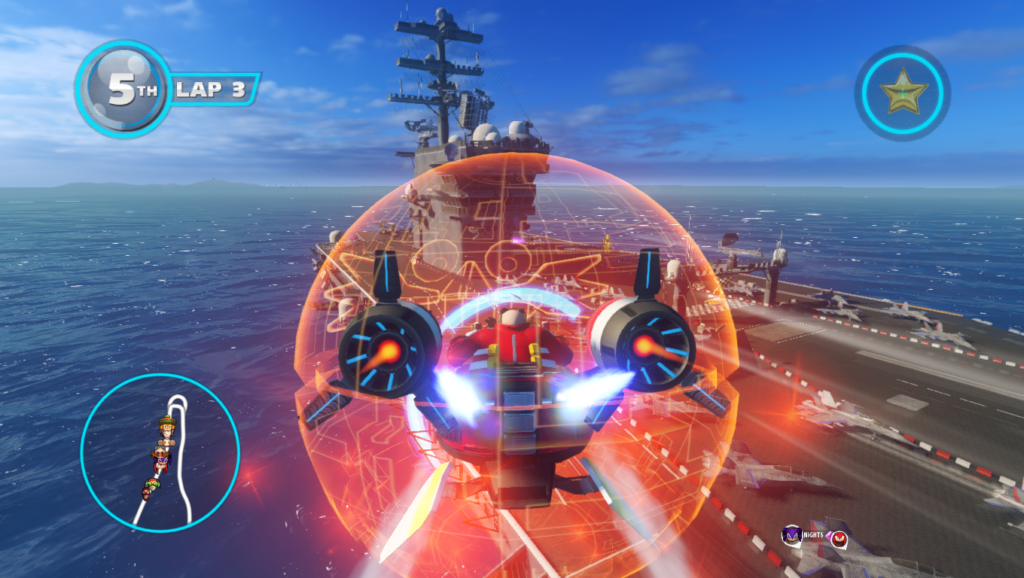
1. Sonic & All-Star Racing Transformed
The epitome of SEGA fan service in the form of a racing game. I’m not even a huge racing fan, but I have played this game back and forth to unlock everything, have it on nearly every console it released, and still play it regularly on my Vita when on trips. Sonic & All-Star Racing Transformed captured some of the most beautiful landscapes in different SEGA worlds, and quite literally transformed them to match this driving, flying, and swimming racing game’s amazing style.
Building off a strong prequel, Transformed expanded the racing horizon with different vehicles for so many SEGA characters, and beautiful landscapes encapsulating everything from Golden Axe to Panzer Dragoon, to even more obscure titles like Burning Rangers and Billy Hatcher & the Giant Egg. Each level had as much personality as the drivers and vehicles, and they all look amazing even at breakneck speeds.
Few things have felt more satisfying in my SEGA-related gaming life than unlocking the final character: AGES. An homage to all generations of SEGA in one somehow, AGES’ car form is the Daytona USA Hornet car, the F-18 Tomcat soars as its jet mode, and an actual Dreamcast controller becomes a speedboat for its water mode with all of these being driven by a VMU. AGES was the best example of a game knowing its audience and still brings a smile to my face just like the screen of the VMU driving it when it takes first place. Sonic & All-Star Racing Transformed is one of my favorite games not only of this generation and decade, but of all time.

Chris Powell
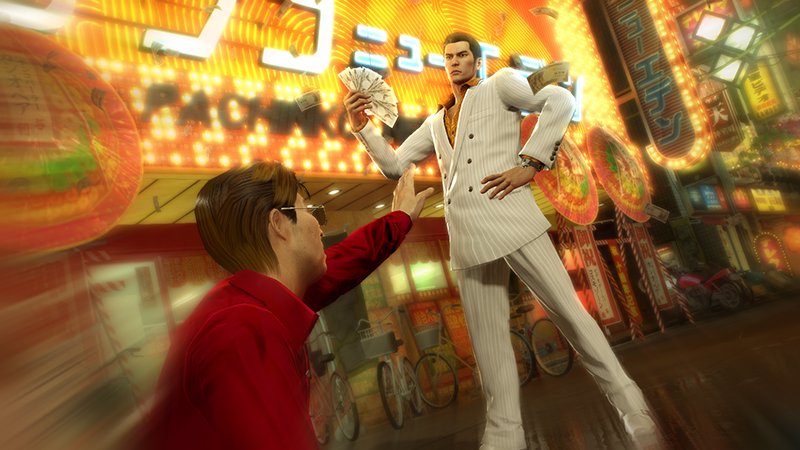
5. Yakuza 0
After playing Yakuza 5, I didn’t know what SEGA was going to do next with the series. Rather than make another sequel and continue Kazuma Kiryu’s story, they jumped back in the past to 1988 to tell how the Dragon of Dojima rose in prominence from his humble beginnings as a low-ranking member of the Dojima Family.
While it tells a genuinely interesting story, the gameplay is a ton of fun, and there’s so much wacky stuff to do, that you can completely ignore the main story and mess around with side missions and be thoroughly entertained for dozens of hours.
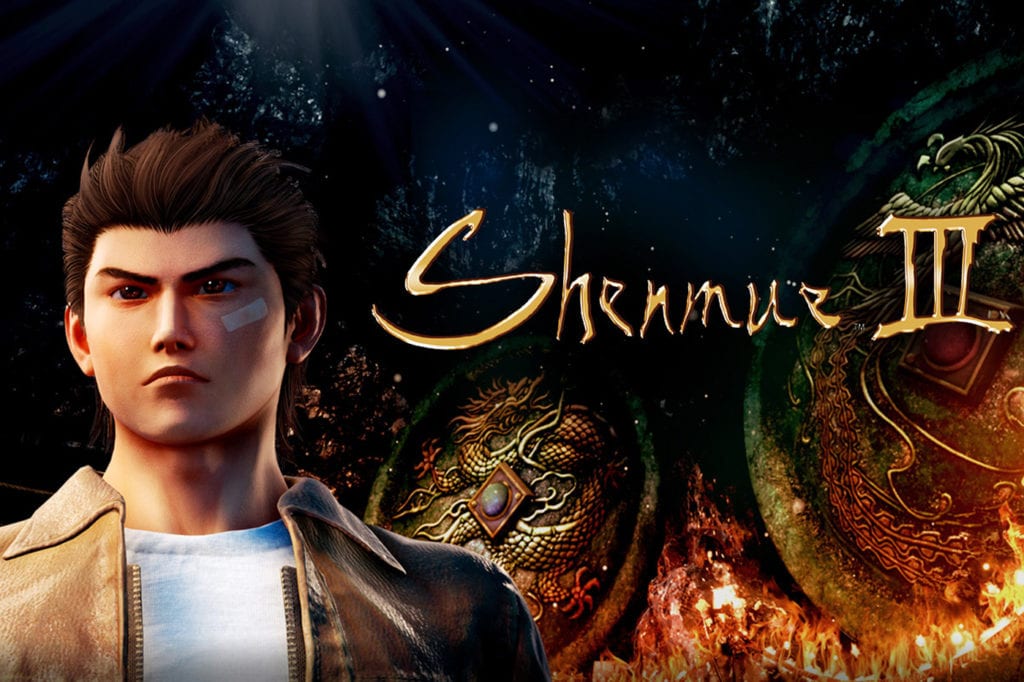
4. Shenmue 3
I already picked Shenmue 3 as my favorite SEGA game of 2019, so you already know it’s a game I really enjoy. Yeah, I know it’s not perfect, and it’s probably the weakest game in the series, but it’s still damn fun and endearing to jump back into Ryo’s shoes one more time.
I have no idea if we’ll ever get another sequel in the series, but even if we don’t, I’m happy to see Yu Suzuki get another shot at telling his story and further exploring his vision.
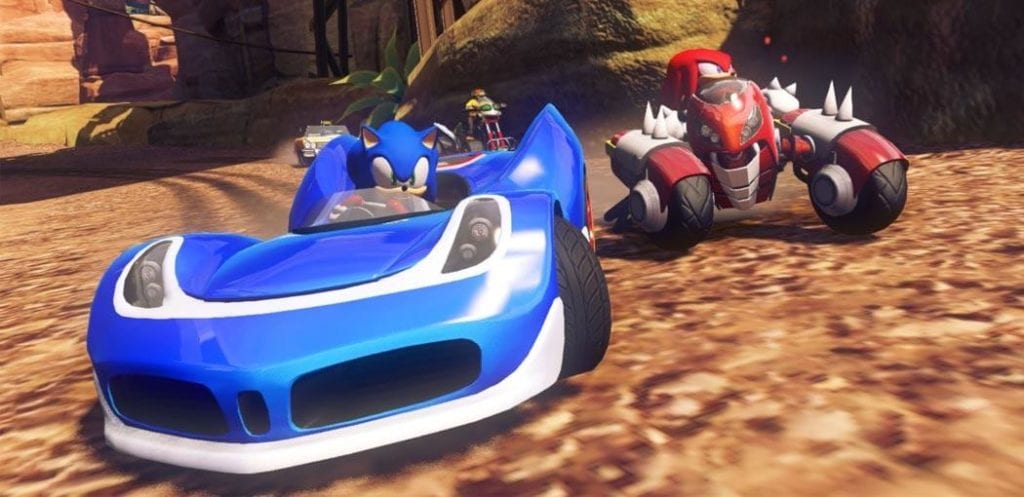
3. Sonic & All-Stars Racing Transformed
Ever since Mario Kart was released on the Super Nintendo, the series has pretty much reigned supreme as the king of kart racers on home consoles. Sure, there were many that tried to unseat Mario Kart, but none came quite so close as Sonic & All-Stars Racing Transformed.
Developed by the fine folks at Sumo Digital, Transformed ramped up the action from the previous game to include boat and plane racing segments in each race. This really changed things up and made for a brilliant game, but the real treat for me was the fan service Sumo poured into the game.
From the fantastic level designs to the various playable characters, Sonic & All-Stars Racing Transformed showed that there is room for other kart racers than just Mario Kart.
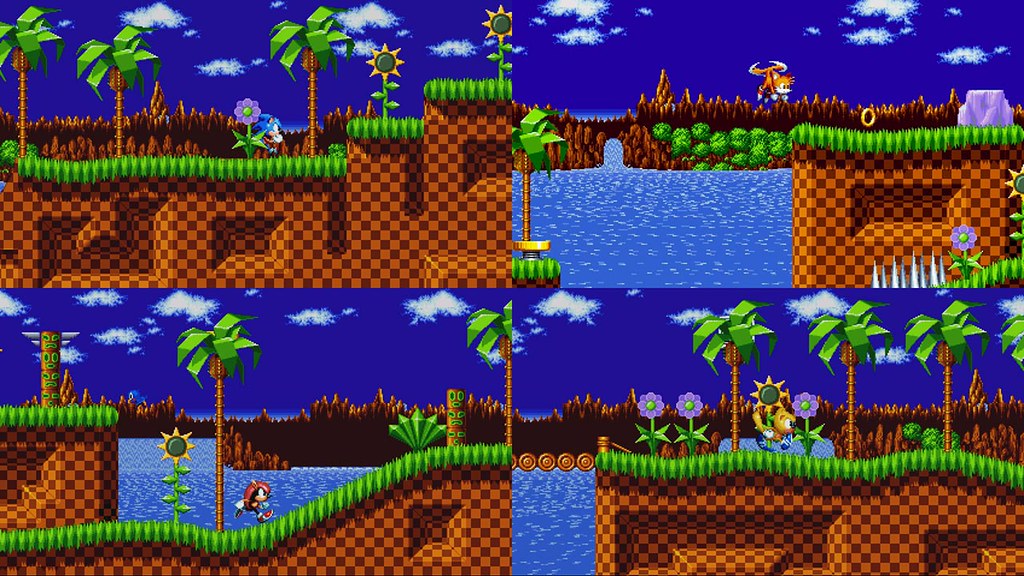
2. Sonic Mania
As someone who grew up playing Sonic the Hedgehog on the Genesis, it’s been pretty painful to see how far the video game series has fallen over this decade. There have been some really dark and bizarre moments thanks to entries like Sonic ’06 and Sonic Boom.
With that said, it was a breath of fresh air to see Sonic Mania take everything that made the original 2D Sonic games great and add in new mechanics, content, characters and more to remind us that Sonic games don’t have to be in 3D to be fun and make people want to buy it.
I sincerely hope Christian Whitehead and company get another crack at a sequel, but even if this is a one-off game and we never get a sequel, it at least proves to SEGA of Japan that we don’t need them to develop an outstanding Sonic game.
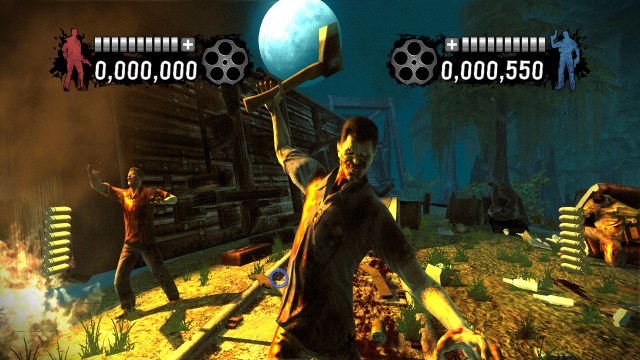
1. The House of the Dead: Overkill
Out of all the fantastic games SEGA released this decade, one game stood out as more outlandish and over the top than all the others – The House of the Dead: Overkill. While technically, the game originally released on the Wii in 2009, an extended cut was released on the PlayStation 3 in 2011 and later to mobile devices a couple years later, known as Lost Reels.
Overkill takes everything you loved from The House of the Dead series but throws you into a grindhouse-horror style setting that ramps up the violence, campiness and cursing to entirely new levels. Some of the bosses are so disturbingly grotesque that they will haunt your memories forever. Trust me, I still see them in my fever dreams sometimes.
Leading up to Halloween 2013, SEGA announced and released Typing of the Dead: Overkill, which takes HOTD: Overkill: Extended Cut and adds the typing mechanic from the Dreamcast’s Typing of the Dead game. It was a great way to jump back into the game, and there were several add-on packs to keep things fresh.
While it’s become common for companies to re-release games today, it was pretty cool how SEGA handled Overkill, with its original release on the Wii and then added content for the PlayStation 3 port, with an eventual Typing of the Dead release on Steam.
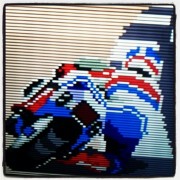
Jayson Lamp
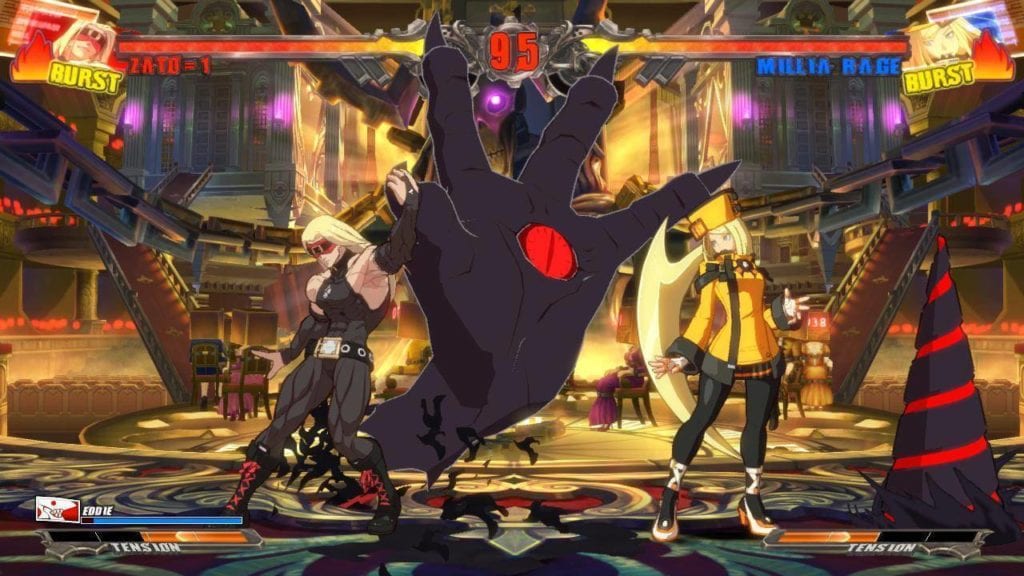
5.Guilty Gear Xrd -SIGN-
Guilty Gear has always been a series that’s close to home, so to see the series finally return with Xrd, was a pretty amazing experience. With fully 3D characters and new,fancied up backgrounds, alongside a pretty rockin’ soundtrack from our boy Daisuke, GG Xrd is a pretty badass game all things considered. Granted Revelator and Rev 2 added more characters and balance changes, Xrd to me is a game that’s very special. It showed that people still cared about GG, and so did ArcSys. This was one of the fighters I got very hype for when it dropped, and it definitely deserves a spot on this list.
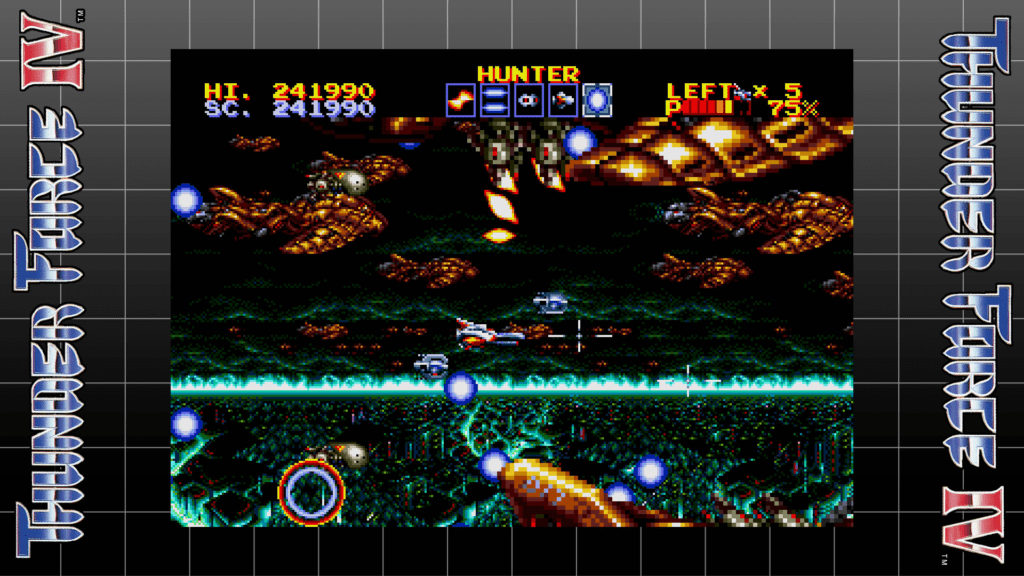
4. SEGA AGES Thunder Force IV/Lightening Force
Now I’m no stranger to a good shmup, and the Thunder Force series are some of my favorites in the genre. Which is why I loved that Sega/M2 ported over Thunder IV to the Switch. Under the SEGA AGES label, this port adds an option to fix the slowdown from the original Genesis game,among a bunch of extras. One cool thing added to this version that changes things up (and calls back to the Gold Pack ports on Saturn), is the player craft from Thunder Force III, the Styx, is usable in game after your first clear.
Thunder IV is amazing in its own right, but I’d go as far to say that this is the definitive version of the game now. With all the M2 extras, and the experience you’re getting as a whole, it’s well worth it. This has been my go-to version ever since it dropped, and it still holds up, rockin’ soundtrack and all. Here’s hoping since SEGA owns Technosoft to an extent, that the other Thunder Force games make it over. AC’s on the way, but ports of V and VI would be pretty great to have on the Switch.
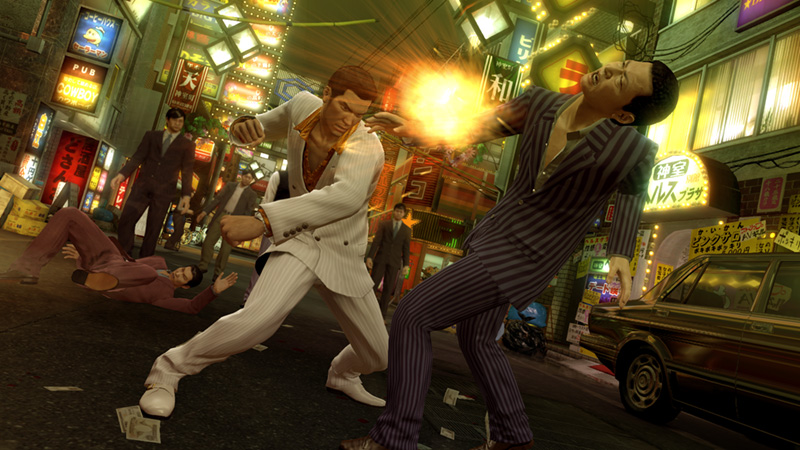
3. Yakuza 0
Now I have to admit I’m a noob to the Yakuza series as a whole. I have played some games in the series in the past (4/5), but didn’t play too deep into them. Yakuza 0 on the other hand, I’ve played a good chunk of, and it kind of sold me on the series. Taking place before the first, 0 is a prequel, and a damn good one at that. I was a bit hesitant at first, but once I sunk a couple of hours into it, I was hooked. Yakuza 0 has a very good combination of great storytelling, solid combat, and an A+ presentation. Not even to mention how much side stuff there is to do ingame.
From batting cages to old SEGA arcade games (shoutouts to Super Hang-On and OutRun being on PS4 through this game), there is so much sidegame to Yakuza 0 that you’ll be occupied for a decent time after finishing the campaign, which is easily the main selling point. It’s a pretty good starting point to the series considering it takes place before all the other games, and l’d say it’s worth a look. If you’ve ever been interested in the Yakuza series, I highly recommend giving this one a look.
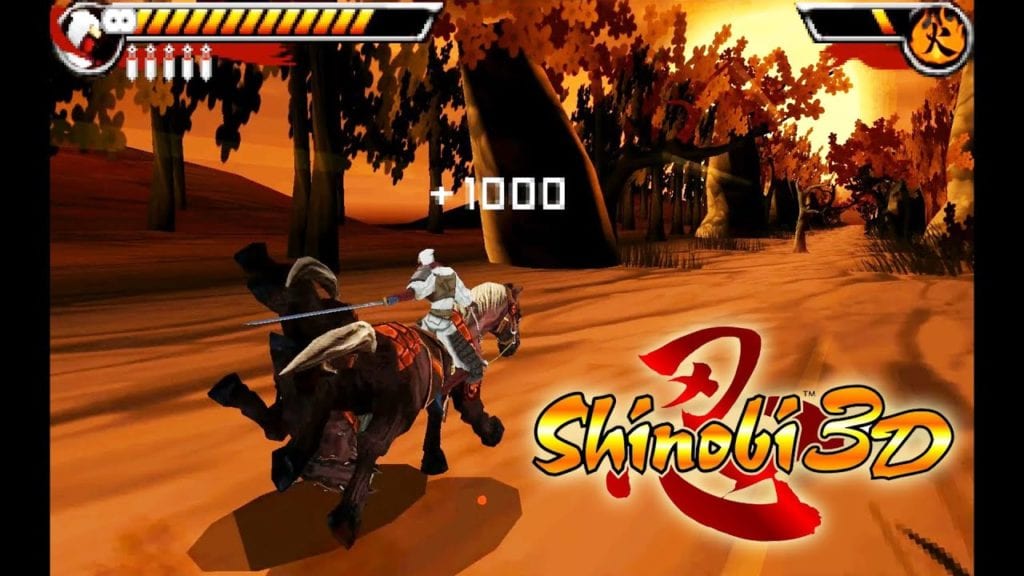
2. Shinobi 3D
I’m gonna preface this by saying Shinobi III will always be my favorite Shinobi game. In my opinion it’s the game that nailed the gameplay/presentation out of the three Genesis games, and is one of the fastest, most fluid sidescrolling action games on the system. Sadly, not too many Shinobi games that came out after play like that badass Genesis game. That is, until Shinobi 3D dropped on the 3DS. Not much was expected out of it, but if you’ve spent a lot of time with the Genesis games, this was a callback worth looking at. Shinobi 3D basically took the gameplay of III, and turned it and the presentation up to 11. (Even defaulting to 6 button mode instead of the standard 3 like Shadow Dancer and Revenge.)
Sporting a new, somewhat cel-shaded graphical style, Shinobi 3D has to be one of the greatest side scrollers on the 3DS in my opinion. The narrative and lore take a hit (Joe Musashi is nowhere to be found, and now you play as his father Jiro) but in it’s place we got a revamp of the classic “Hard as nails Genesis Shinobi” format, with a ton of extras and other stuff to keep up replay value. It was considered a budget title, but that is definitely not the case here. If you like the challenge of a classic ninja game, I’d say Shinobi 3D could be worth the time. Whoever developed this game had some serious love for Genesis Shinobi, and Shinobi III, and it shows. Not to mention there’s an After Burner inspired stage where you fight on fighter jets and the classic After Burner theme plays.
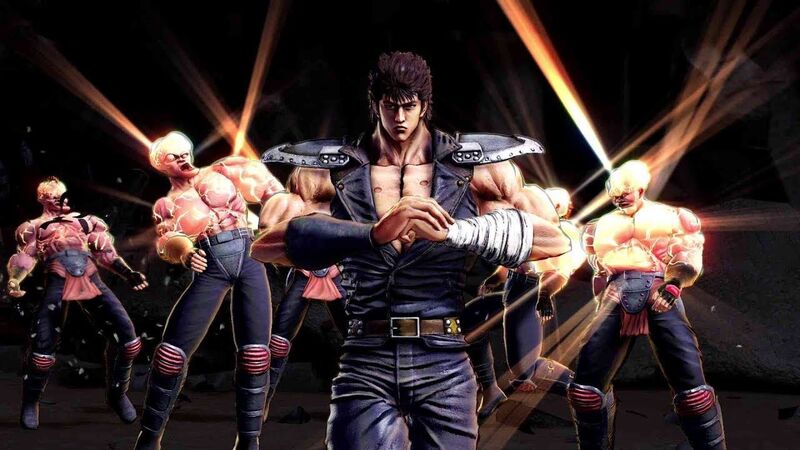
1. Fist of the North Star: Lost Paradise
I was initially shocked when I heard that a new Fist of the North Star game was coming. Not to even mention the hype that it was being worked on by the Yakuza team. Sega had worked on North Star games before, most notably Hokuto no Ken/Black Belt on the Master System,and Last Battle on Genesis; but after those two and publishing the Arc System Works fighter in 2007, not much was heard from the battles in the wasteland.
Though when Lost Paradise came out in early 2018, it definitely brought back the spirit of those early SEGA games. Taking a classic anime storyline and adapting it to a Yakuza like beat ’em up, makes for a good combination. The combat was fluid, with all of Kenshiro’s classic instant death moves and the gameplay and presentation was top notch in my opinion.
There’s also so much to do between actually playing through the campaign, like finding old SEGA arcade cabs or going on side missions. I didn’t go through many long games over the past 10 years, but Fist of the North Star was one that was definitely worth it. If I had to make a pick for this decade’s best SEGA game, this takes it.

Brett Hatfield
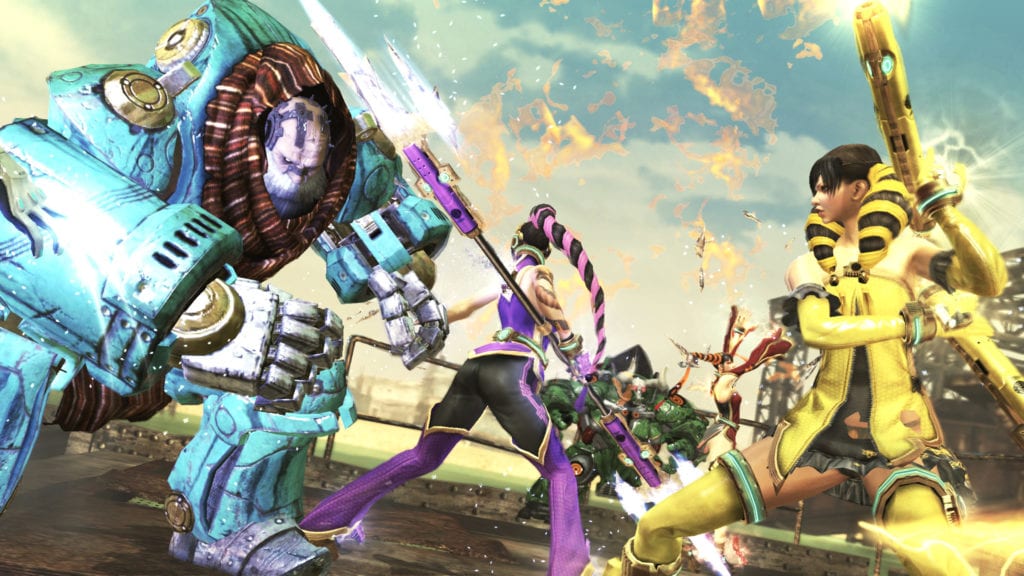
5. Anarchy Reigns
Anarchy Reigns might be the single most underappreciated SEGA title of all time. The MadWorld sequel may have been plagued with promotional mismanagement, but boasted a colorful cast of characters and an absolutely legendary soundtrack.
And while it lacked decent single player experiences, due to that just being tacked on late in development, it made up for that by being one of the most fun multiplayer experiences of the seventh console generation. Between your typical battle royale modes like capture the flag and death match, and unique modes like Death Ball (which I say is the best football game since PS2 Madden), Anarchy Reigns’ online is a blast, and something I always look forward to returning to for streams. The day they shut the servers down is a day I’ll weep uncontrollably.
Then again, with the right promotion, and maybe a remaster in this current era of complete battle royale saturation, it could do some serious numbers… What do you say, SEGA? Maybe ring up Platinum and bring this baby to the current gen? Please? I’m begging you?
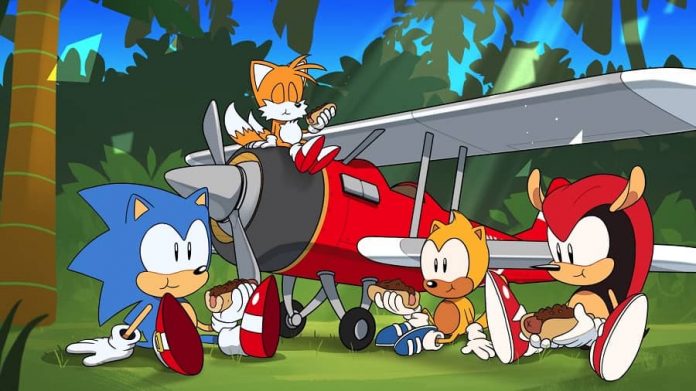
4. Sonic Mania
Sonic Mania is the perfect love letter to classic Sonic, and completely washes out the bitter taste Sonic 4 left in all our mouths. Hell, it even washed out the bad aftertaste Sonic Forces would leave a couple months later. It’s even fully replaced even Sonic 3 & Knuckles as my favorite Sonic title of all time.
The amount of care and attention Taxman and Stealth’s teams put into this game still leaves me in awe. The easter eggs like Knuckles and Knuckles mode or Mean Bean. The way they took dried up wells like Green Hill and Chemical Plant and made them interesting again. The character roster not just including Sonic, Tails, and Knuckles, but also dusting off Mighty and Ray outta nowhere.
My only real gripe about the game is that it didn’t have enough original zones versus remakes. Especially given the quality of Studiopolis Zone, which was a modern classic in every facet. If there’s ever a true sequel to Mania, I hope they have more confidence to give their original concepts more screen time.
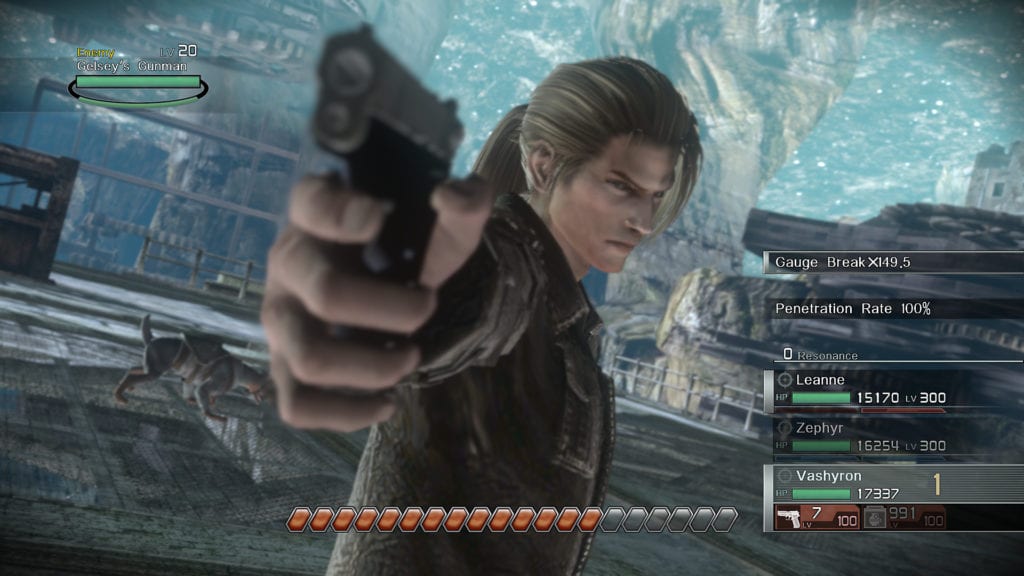
3. Resonance of Fate
If you were to ask me, what was the best Japanese RPG released in 2010, specifically March 2010, you’d expect me to say Final Fantasy XIII, right? Wrong. While I do have a lot of love for what became the Fabula Nova Crystalis trilogy, the game that really stood out to me that year was the lesser hyped Resonance of Fate. While it never took off in the west like it did in Japan, RoF stole my heart from the first chapter and never gave it back.
It’s an absolute treat for the eyes. Character designs and the world setting are gorgeous, and it’s also one of the most stylishly animated games I’ve ever played, and even on weaker seventh-generation hardware before its out-of-nowhere remaster in 2018, it still looked amazing. The game is tough, and combat certainly takes some getting used to. But my god, does it feel great when you finally figure it out and start racking up 500 hit combos and instant killing bosses.
And while the story isn’t super great, the chemistry and dialogue between the three lead protagonists more than pick up that slack. I fell so hard for Vashyron, Zephyr, and Leanne that I even went out of my way to get both Project X Zone games just for them. The less said about that experience, the better, but as far as Resonance of Fate goes, it’s a must play for any SEGA or RPG fan.
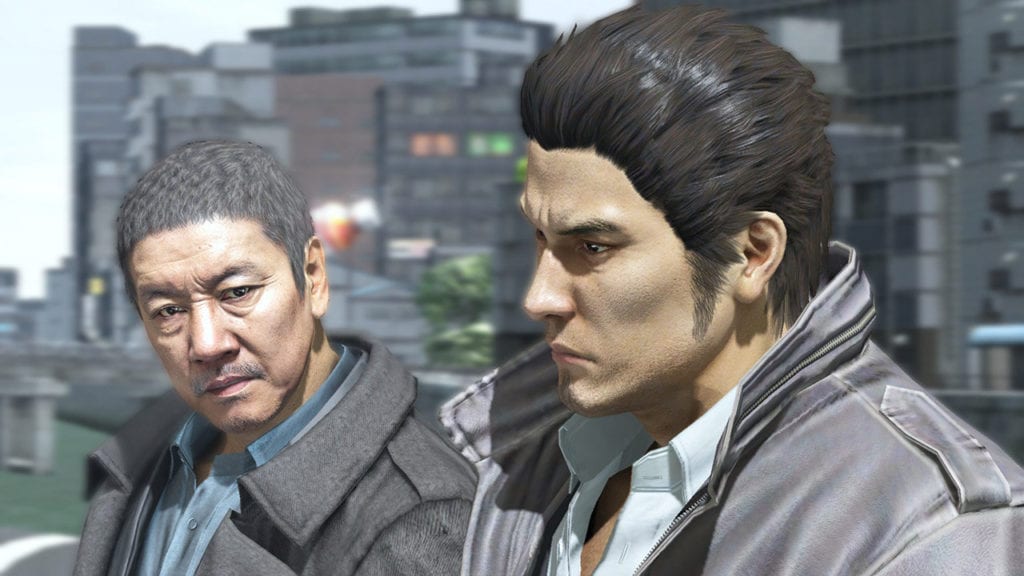
2. Yakuza 5
And then, there’s the biggest SEGA story of the decade. The fall and rise of Yakuza. Yakuza 5 was the first mainline Yakuza game to not get a Western release, citing the commercial failure of Yakuza 4, and the critical failure of Yakuza: Dead Souls. It took a solid four years, but thanks to a push from fans, and a little Sony coinage, Yakuza 5 finally made its way over, leading the last ditch effort to make the series take off in the West.
And while it wasn’t exactly what pushed the series into the mainstream, my god, it was worth the wait. Five playable characters, with returning characters feeling better to play than they had ever, or would ever again. The story hit emotional levels that later games just couldn’t hit again, and frankly, I would’ve been fine with it being a series finale.
For the longest time, I called it my favorite SEGA game of all time even… until SEGA acquired a small company called Atlus, and April 2017 hit.
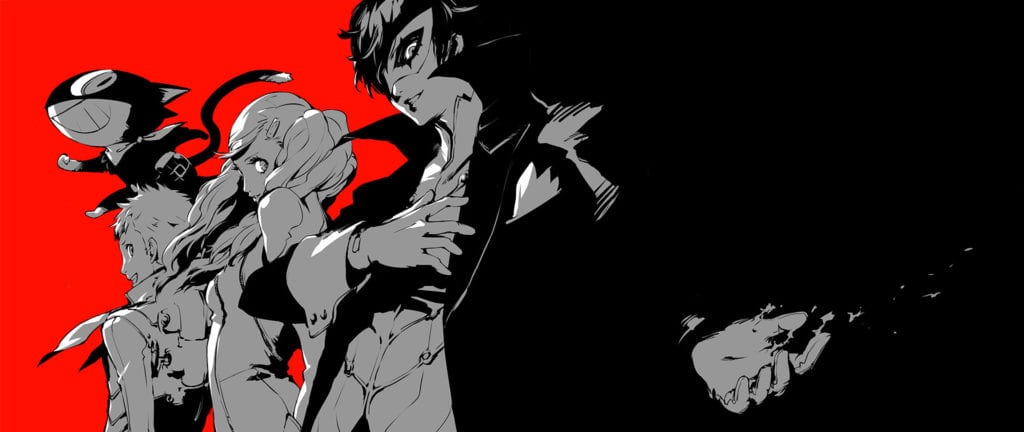
1. Persona 5
That’s when Persona 5 hit the scene, and took my heart. P5 isn’t just my favorite SEGA game of this decade, or even just favorite SEGA title. It stakes a pretty major claim to being my favorite game of all time, a certain Final Fantasy side game notwithstanding. While it does have a couple small warts, notably in its handling of a couple stereotypes, the core experience of Persona 5 is damn near perfect in every way.
It made me love turn-based gameplay again when I thought I couldn’t. Its main cast of characters is the best in the series’ history. The aesthetics are still mindblowing to this day, and from the looks of Persona 5 Royal and Persona 5 Strikers, it’s not even the tip of the iceberg for this series. And need I say anything about the story? Actually, probably not, I’d never forgive myself if I spoiled it for y’all.
Persona 5 is a pure masterpiece, and whether you choose to go with the cheaper original release, or wait for P5R coming out in the spring, you absolutely have to give it a shot. You’ll be glad you did.

TJ Kitsune
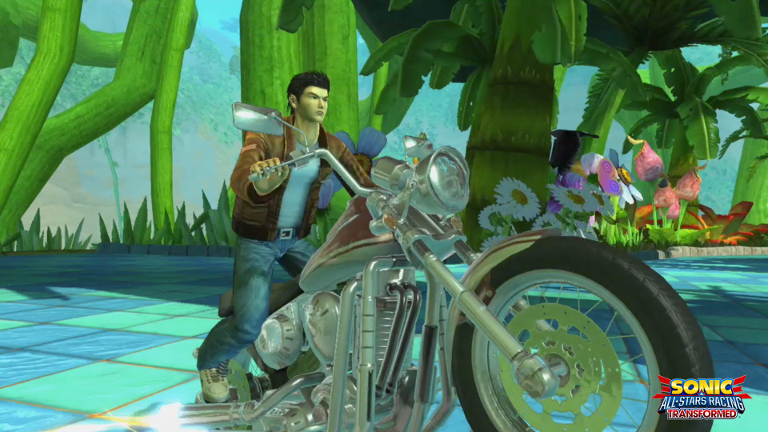
5. Sonic & All-Stars Racing Transformed
I was blown away when I played Sonic & All-Stars Racing Transformed. It was far better than the original. I loved the additional characters and felt it played even better than other kart racers of the time. The nostalgic stages were amazing, and the kart transformations were smooth and quick. I had a blast playing this online with the gang. This is definitely one to have in your collection!
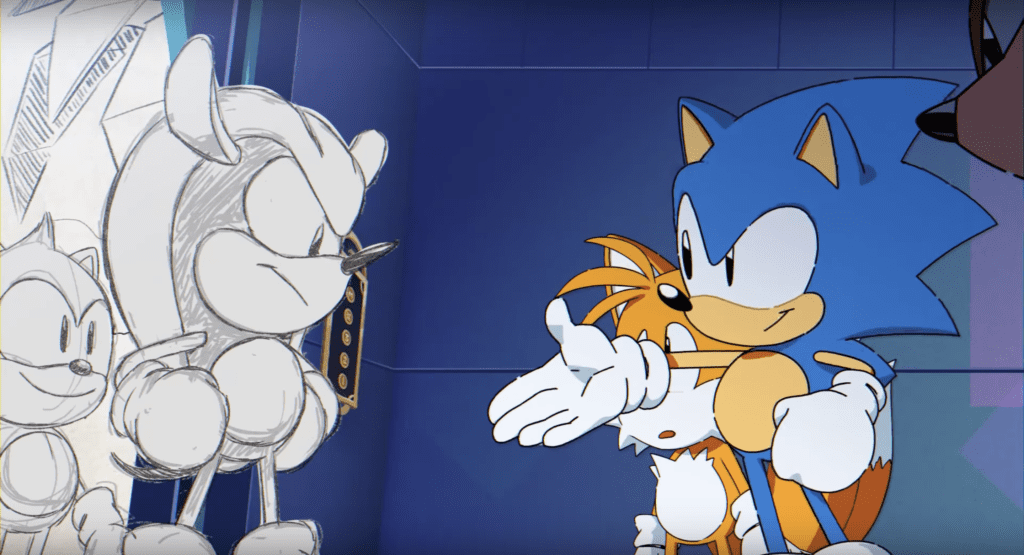
4. Sonic Mania Plus
A return to form from the original Genesis games. This felt like a traditional Sonic game in every sense. Bringing back Mighty and Ray was a great addition to Sonic Mania and added more ways and re-playability to the game. It was wondrous to once more play through a 2D Sonic game with amazing level design and the fast and furious sense of speed of the old games. My only gripe was the difficulty of obtaining the Chaos Emeralds, but I chalk that up to me just being older and not spending as much time as I did in the Genesis days of mastering the special stages.
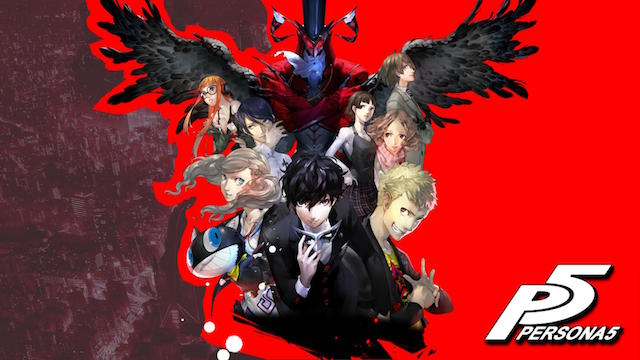
3. Persona 5
It was tough choosing between Persona 4 Golden and Persona 5. The fifth game in the Persona series though won me over more-so with the fact of the story revolving around a mystery of how the main protagonist wound up arrested and how the group of thieves are vigilantes stealing ‘hearts.’ I found it more intriguing to play as a sort of ‘bad guy’ in the public eye while taking vengeance on those who do wrong.
The dungeons felt more interactive with the small puzzles and the times you traverse around in the cat-car was amusing and fun. It felt great to get into the various story arcs of each character and see them develop through the game. It made me feel like I wanted to be a part of the Phantom Thieves and not just some friend dealing with personal issues along the way. I felt accomplished after each mission and I can only look forward to the additions they make in Royal coming in 2020.
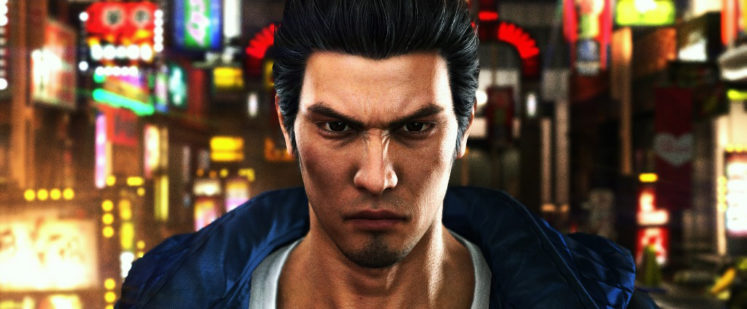
2. Yakuza 6: The Song of Life
We had a good handful of Yakuza games in the last decade. All were amazing in their own right and seeing them remastered and more people taking interest in the games was one of the best things to witness. I could only choose one though, and for me it was the six in the series and the final game for Kiryu Kazama. The presentation that this was Kiryu’s final chapter in his arc and watching as everything comes to a close for him was a true treat for me. Aging and finally wanting to be done with everything, save for seeing his family grow was touching.
I will say the combat didn’t feel as immersive as some past games. It seemed like SEGA skimped out on allowing more interaction with objects during combat. It for sure wasn’t its strong suite. However, the cast and graphics were top of the line for the series. The series is truly best played in sequential order here. Even though this isn’t truly the last we’ve seen of Kiyru, I will miss him as the main protagonist and the seemingly never-ending troubles he has of being pulled back into the dirty dealings of the Yakuza, but glad to see him get a happy ending after all the heartache he’s been through over the years.
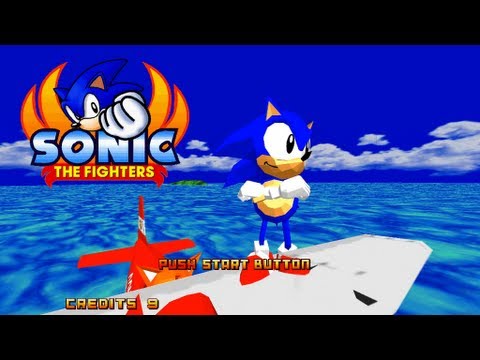
1. Sonic the Fighters
This one may seem like a truly odd title to have as number one. Having Sonic the Fighters released in its complete version and getting upscaled graphics for PS3 and Xbox 360/One was a dream come true for me. It’s become a guilty pleasure of mine and a game I can easily pick up and play for a few hours and enjoy it. Sure, it’s wacky, has crazy moments, can be cheap, has no deep mechanics and only works with just three buttons, but I feel that’s all part of its charm.
I have a long history with this title. I remember seeing articles of it coming to the Saturn and then being crushed when it was canceled. It wasn’t seen again until the GameCube several years later and not in the best version of itself. It held me over though until I was lucky enough to find the original arcade cabinet and I felt we would never see anything of this title again. SEGA then released what I would consider the definitive version on last generation consoles with online play.
It looks sharp and retains the same feel as the arcade. It’s always a blast to jump online with friends, play for a couple of hours, watch us get frustrated over the silliness of it all, but still all enjoy its simplicities. Besides, who wouldn’t enjoy seeing Sonic, Tails and Knuckles jump into the ring and just pound on each other?

Graham
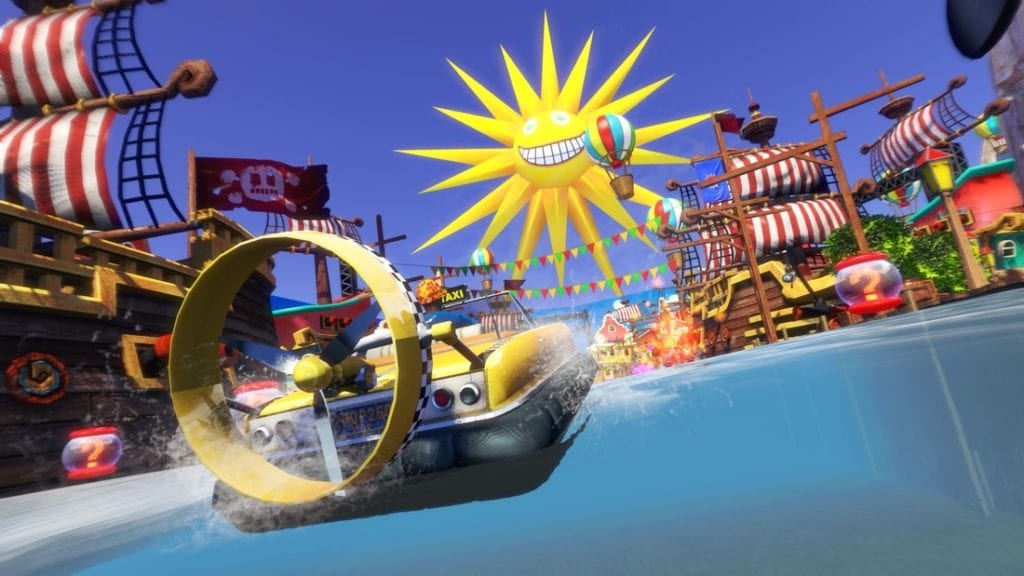
5. Sonic & All-Stars Racing Transformed
The sequel to the excellent Sonic & SEGA All-Stars Racing from just three years prior. The first game gave Mario Kart a run for its money and the sequel did that and more, incorporating some truly brilliant tracks that change as you race around them and some fun mini games along the way.
The best part of it was how well the team at Sumo Digital brought in the vehicle switching. Then bring in multiplayer fun and All-Stars Racing Transformed became possibly my favorite racer this decade.
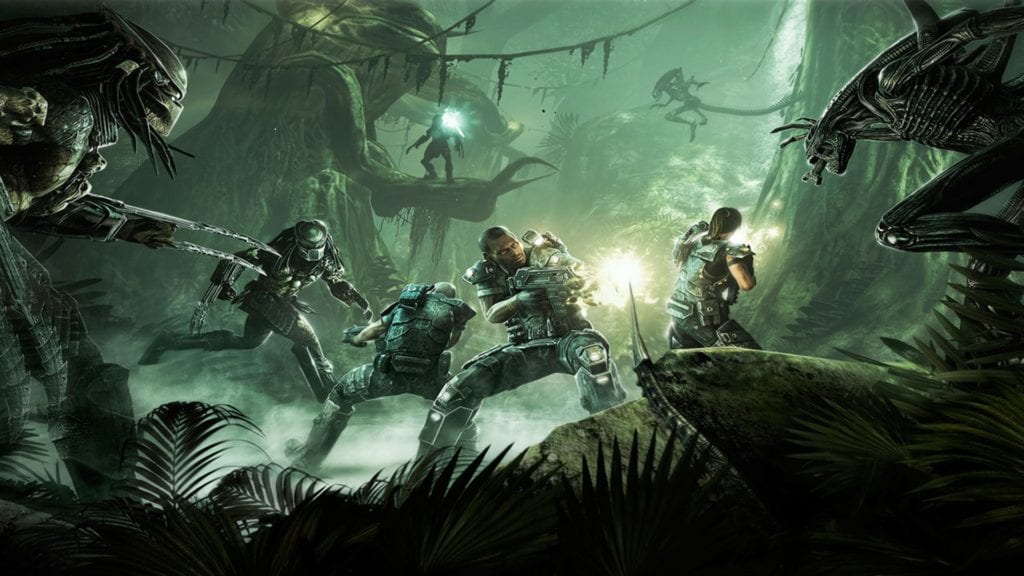
4. Aliens vs. Predator
SEGA had its ups and downs with the Alien franchise, but I feel AvP (2010) is a seriously overlooked gem from 2010. While the single-player campaign wasn’t super long, it never felt too short to me – especially when you have three stories to run through. Playing as the humans, Xenomorphs and Predators was a unique experience, and it was fun to see how their plots intertwined and experience certain set pieces in levels from the eyes of the ‘enemy’.
While not a perfect game, the visuals were good, the gameplay was a solid as a rock and it was really fun! To top it off, it had one of the best multiplayer experiences I’ve had in ages when it launched. It actually pains me that so many people disregard the experiences this game had to offer.

3. Alien: Isolation
I’ll admit, I haven’t finished Alien: Isolation, and I probably never will. That’s because this is the closest I think I’ll ever get (and hope to ever get) to experiencing a Xenomorph/Alien outbreak. I’m fine with scary movies, but scary games are another thing.
I got to a point somewhere early in Alien: Isolation, where you meet the alien for the third time, and I simply couldn’t continue. I practically shit myself and turned off my Xbox 360, saying, “Nope. I’m done, thank you.”
The game is so immersive, and you feel so weak against the Xenomorph hunting you. It’s terrifying to me, but I absolutely love everything about the game. I think it’s brilliant, and the best game I will never finish.
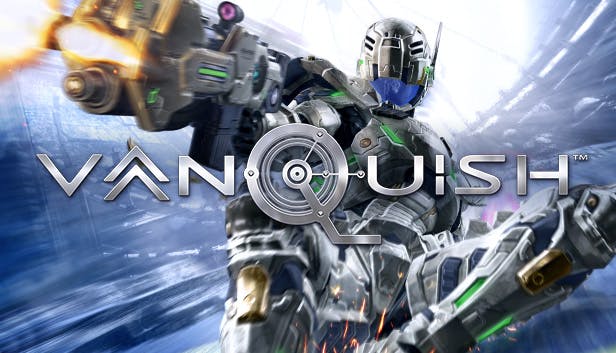
2. Vanquish
While I love Bayonetta (which would have made the list, but it came out in 2009), Vanquish is my favorite game to come out of the Platinum Games/SEGA deal. This is another gem that too many overlooked when it launched. I feel that’s because people saw it as a Gears of War clone, with over-the-shoulder shooting and a cover system. But GoW this is so NOT.
The shooting can be done from cover, but the real fun comes when you slide across the floor at break-neck speed, blasting enemies as you skid past them. The beauty of Vanquish was how each level is split up into a series of battlegrounds, each one completely unique in their environments and how to tackle them.
Then the real fun comes as you face larger and larger enemies. One of the earliest boss fights in the game, against a giant house-sized mech, becomes a standard enemy type later in the game. It’s insane. You also have some truly impressive set-pieces in the levels, with environments that are moving and changing. Like fighting on a steep slope, as parts of the destroyed space station roll down towards you. Or a mech the size of a city, which appears to be a flat part of the background actually turns out to be fully 3D and really moving towards you, blasting lasers as it goes.
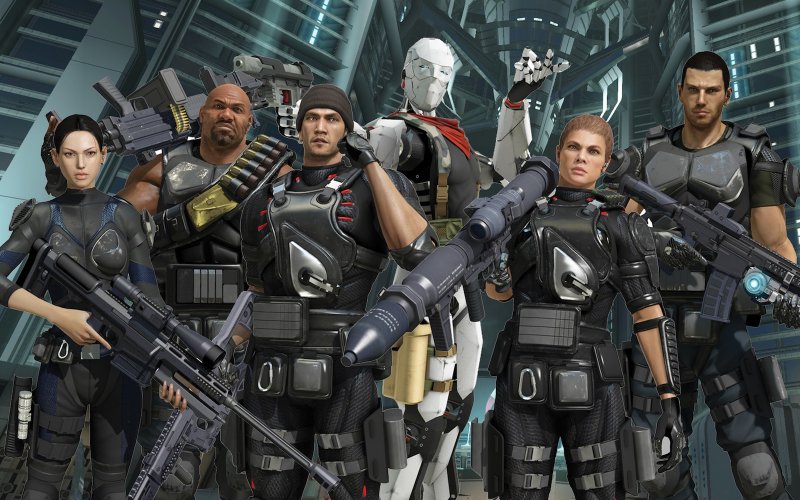
1. Binary Domain
Binary Domain is possibly the most surprising game I think I’ve ever come across. This is yet another third-person shooter that got the “this looks like Gears of War” treatment. It’s such a freaking shame that SEGA didn’t promote this hard enough and that the gaming press didn’t take more notice of it. Because (surprise) it’s brilliant.
I’ll admit, the demo SEGA released was borderline confusing and didn’t help with first impressions. And the first 20 minutes is a bit of a letdown, because it’s slow, and it does feel like a GoW clone. But as soon as you beat the first boss encounter and jump off the side of a giant sea wall, sliding down a near-vertical slope, suddenly the game becomes amazing and doesn’t let up.
Binary Domain is, at its heart, a third-person shooter – but it has RPG elements, which make it so much more engaging. For example, it has one of the few ‘consequence systems’ I’ve seen that truly affect your game/story, outside of Mass Effect.
What made it stand out for me this decade, was how it has one of the best and most engaging stories I’ve played through in years! It has great characters, such as Cain – a French combat droid, who all help bring the game world and the story to life. There’s cracking level design, beautiful visuals, awesome boss battles and a great real-time combat system. Blasting limbs off robots has never been so much fun!

Christopher Wenzel
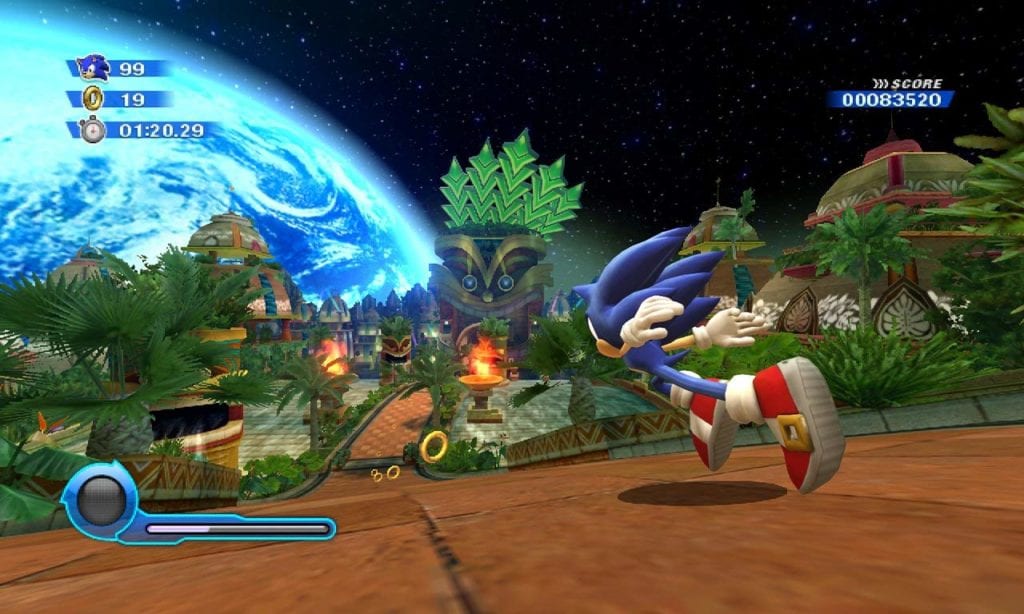
5. Sonic Colors
Seven Years. That’s how long I waited for a competent 3D Sonic game. After the release of Sonic Heroes in 2004, the series kind of fell into a rut with back to back flops: Shadow the Hedgehog, The Sonic Storybook spinoff series, and the infamous Sonic ’06. At the time, fans became very vocal about ditching the 3D style in favor for the more polished 2D games on the Game Boy Advance and Nintendo DS.
But with Sonic Colors, Sonic Team ditched the super serious tones, trimmed the cast to the bare essentials, and slapped a delightfully catchy and energetic electronic/pop-punk soundtrack. It marked the first time that we’d see the Wisps, and it perfected the Boost system originally introduced in the Rush games and gave us more of what was lacking in Sonic Unleashed – Actual fast paced gameplay. Colors took you to breath taking and dynamic worlds like Tropic Resort and Aquatic Park. I probably played Starlight Carnival three times in a row on my first play through.
For me, Sonic Colors’ biggest achievement is that it gave me hope for the future of the series. That I wouldn’t have to face another disappointing release of abysmal games from my childhood hero. That I wouldn’t have to keep diverting the gaze of others away from seven years of misery, and that I could confidently put a game in their hands and tell them that Sonic is back.
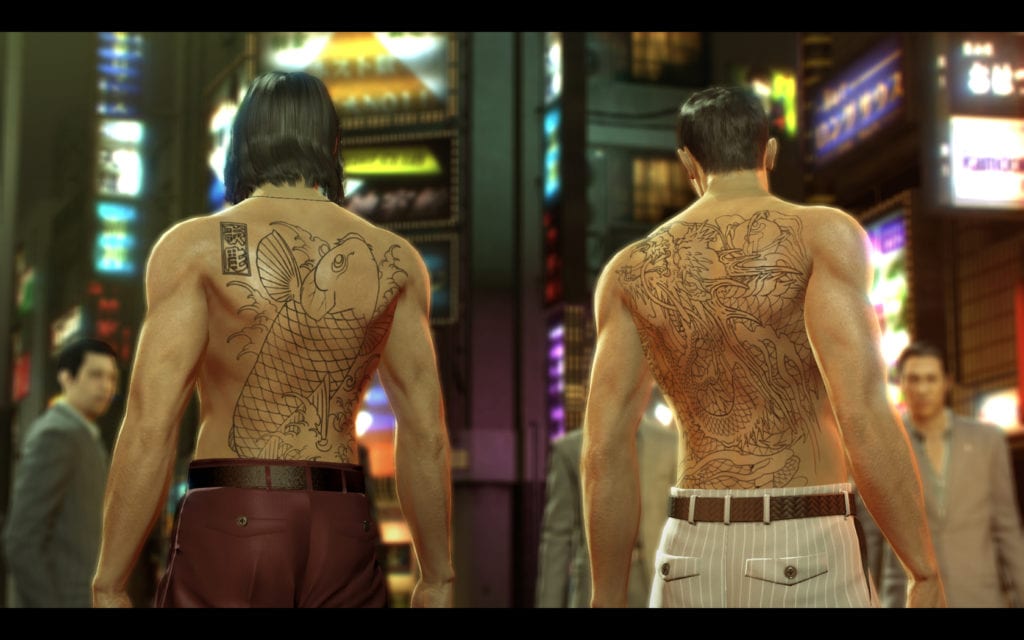
4. Yakuza 0
The first time I tried my hands at a Yakuza game, my ignorance got the best of me. I was expecting something along of the lines of Japanese Grand Theft Auto and instead was handed this obscure beat ‘em up about gangsters that doesn’t seem to do gangster stuff.
My first 30-minute playthrough introduced me to a number of characters that I apparently was supposed to already know, judging by the lack of introductions. I barely got through the first fight and I was already on my way to trade Yakuza 4 at my local Gamestop. I gave the series another go at the behest of some overly zealous friends who kept emphasizing not to approach Yakuza like any old sandbox game. “It’s not like any other crime drama you’ve seen.”
There were no truer words spoken that day. The Yakuza Saga is an emotional roller coaster about passionate people in undesirable positions. The day to day struggles of characters like Kiryu, Majima, and Nishiki to overcome physical and moral obstacles is the focal point of Yakuza’s storytelling. And Yakuza 0 does a phenomenal job of crafting the origin story of our tragic heroes. Take a step into the underbelly of Kamurocho and learn of our main character’s humble beginnings as low level gang members that get caught up in a conspiracy surrounding the “Empty Lot.”
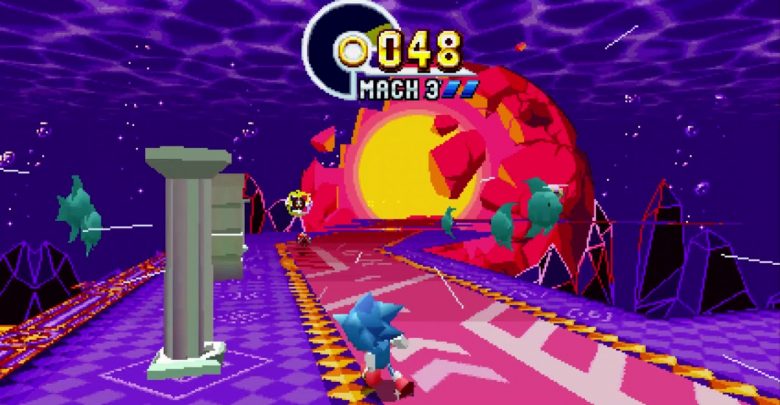
3. Sonic Mania Plus
While the success of Sonic Colors is nothing to scoff at, many of us Sonic fans weren’t completely satisfied with the end result. There’s always been a call to return to our roots, to go “back to basics”, if you will. The creative direction that Sonic Team was taking wasn’t well received as seen with Sonic Lost World and even Sonic Forces. Ultimately, it would take the handiwork of a motley crew of diehard Sonic fans to deliver what the community en masse had been asking for.
Sonic Mania is undoubtedly the ultimate love letter to a franchise. Led by the legendary Christian Whitehead, PagodaWest Games and Headcannon masterfully recreated half a dozen classic stages from our childhood along with showcasing their proficiency with crafting brand new experiences. The Plus expansion brings back two lost icons, Mighty the Armadillo and Ray the Flying Squirrel along with adding on the brand new “Encore” mode, where you can play as all five characters in a single playthrough.
Sonic Mania Plus has made me reevaluate the franchise as a whole, to revisit past experiences and track how we got to this point. It’s taken the very best of the series and compounded it into a single, near perfect entity.
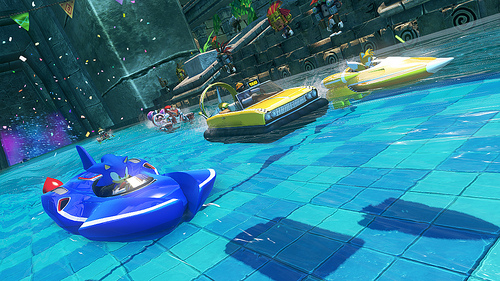
2. Sonic & Sega All Stars Racing Transformed
I’m going to get straight to the point: Sonic & Sega All Stars Racing Transformed is the greatest kart racer I’ve ever played. It’s no secret that the MegaVisions crew is in love with it either. Nearly every single staff member had it on their list, whether it be in the top five or an honorable mention.
I’m not going to get into how Sumo Digital developed the most dynamic stages in ANY kart racer since Diddy Kong’s Racing. How Sonic & Sega All Stars Racing Transformed breaks the traditional three lap monotony by constantly changing the track landscape, having the player race on land, sea, and air. I’m not going to talk about the Boost Races, the Pursuit modes, or the Traffic Attacks, all challenging the player over the course of 20+ tracks.
I’m not gonna talk about the re-imagined worlds of Skies of Arcadia, After Burner, Golden Axe, Panzer Dragoon Saga, or how it’s still arguably the best looking kart racer on PC. I’m just gonna tell you that it’s the best kart racer out there, and you’re just gonna have to take our collective word on that one.
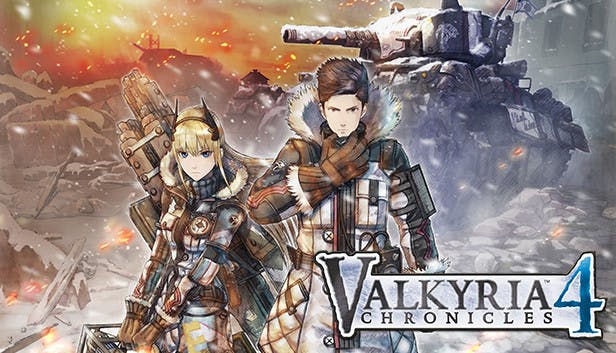
1. Valkyria Chronicles 4
On a technical level, there are better games. There are stories that are more fleshed out, with more hooks, twists, and turns, keeping the viewer on their toes. Valkyria Chronicles 4 is not that game. It has traditional anime tropes that you can see a mile away. It can be silly and quirky and a little immature – and it has the obligatory hot spring scene.
But it’s a game where your split second decision making will determine whether someone is going to come home. Having units die will stifle character progression as each unit bonds with other units, building on each other’s trust, and unlocking specialized missions revolving around those characters. Each character is laid bare with all of their flaws exposed. They’re not the cookie cutter special forces avatars you see in Call of Duty or Battlefield. They’re regular, everyday people.
Valkyria Chronicles 4 continues to refine what is probably the most intuitive tactical role-playing system on the market: BLiTZ or Battle of Live Tactical Zones system. Players will move their individual units across the battle field under heavy small arms fire and artillery in real time. It allows for careful planning when observing from the map, but requires quick thinking and reflexes to accomplish the mission.
What Valkyria Chronicles 4 has that the other games do not is depth. It is an emotionally charged story on the sweeping effects of war and how it affects the every day man. It’s a story about overcoming adversities while failing nearly every step of the way. About coming to your destination with victory in your grasp, and still falling short.
Honorable Mentions: Alpha Protocol, Castle of Illusion starring Mickey Mouse, Catherine, Dengeki Bunco: Fighting Climax, Dragon’s Crown, Hatsune Miku Project Diva F, Guilty Gear Accent Core Plus R, Initial D Street Stage, Lost Dimension, Mario & Sonic at the Olympic Games: Tokyo 2020, Persona 4 Arena Ultimax, Project X Zone 2, Puyo Puyo Tetris, Renegade Ops, Rhythm Thief & The Emperor’s Treasure, Rock of Ages II: Bigger & Boulder, Sega Ages OutRun, SEGA AGES Phantasy Star, Sega Rally Revo, Sonic Lost World, The Alliance Alive, Virtua Fighter 5 Final Showdown.

